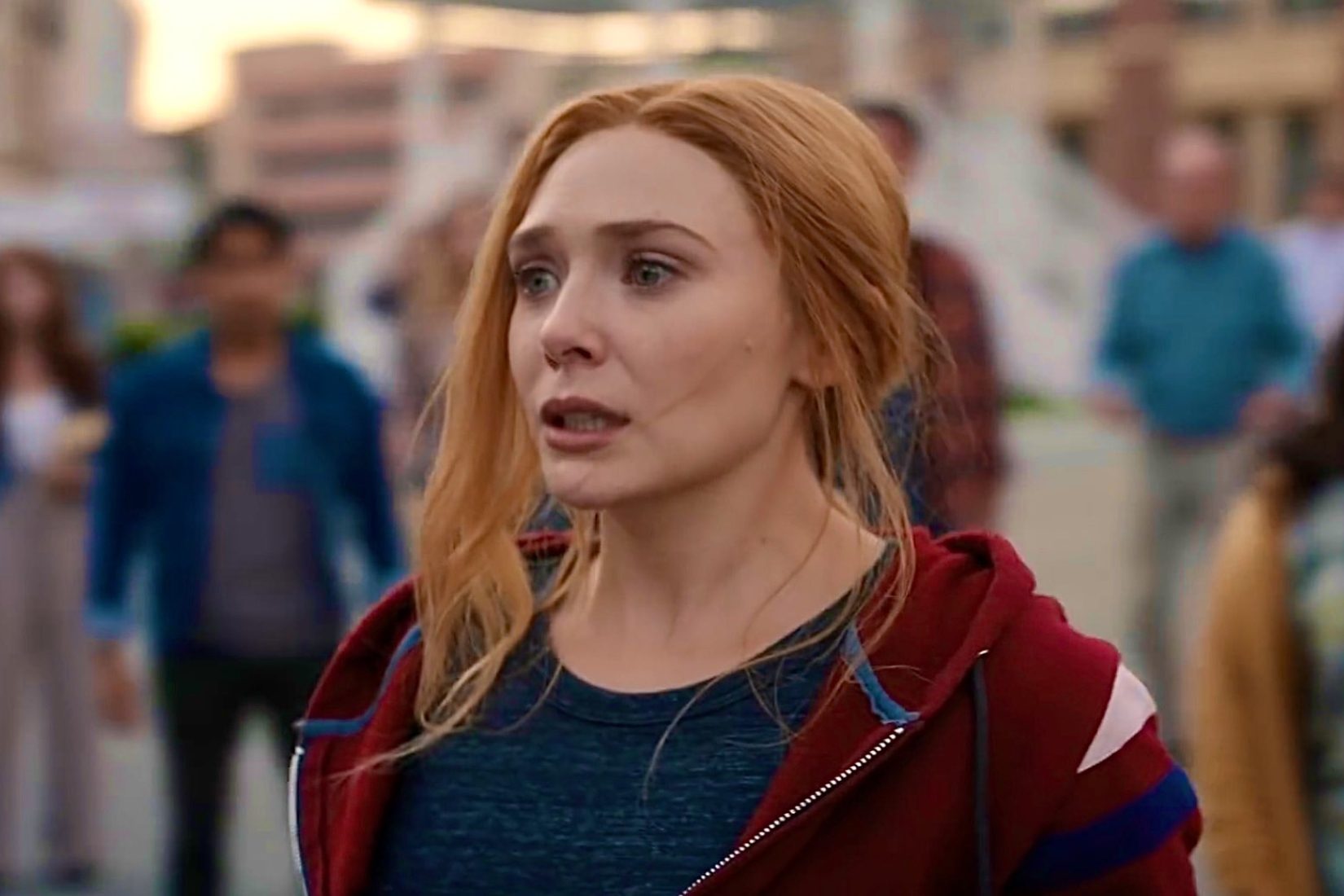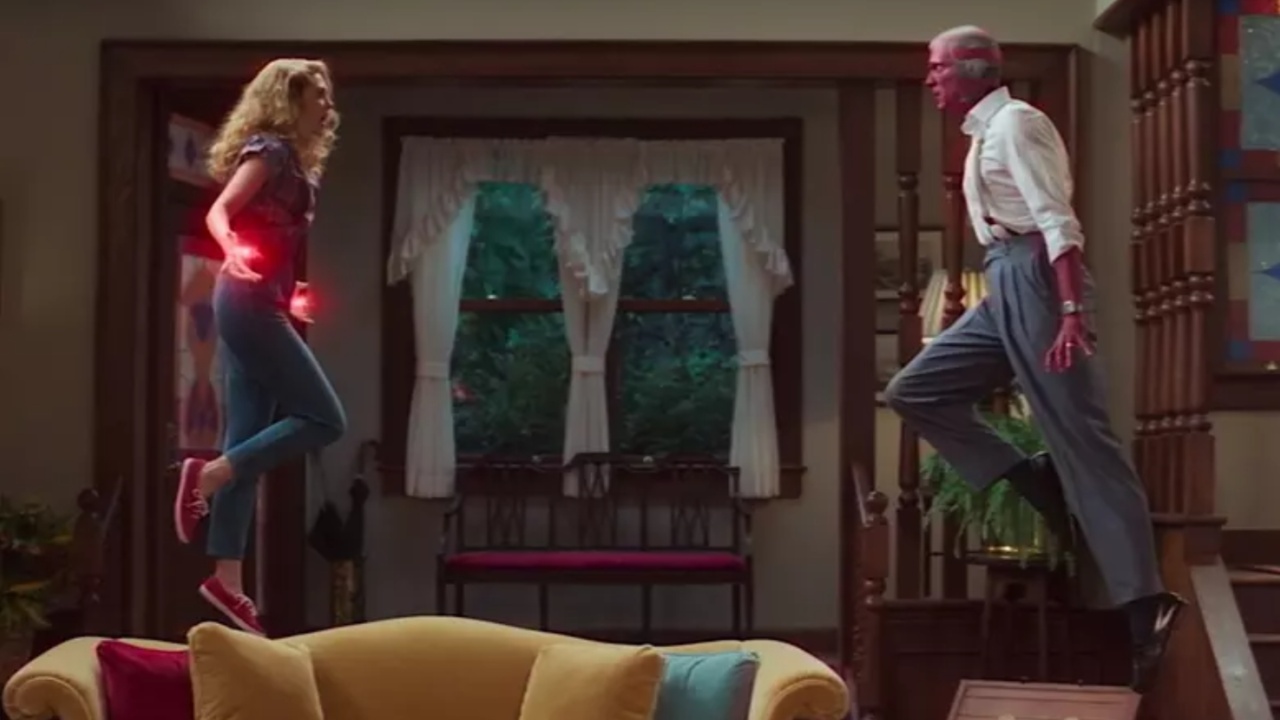WandaVision concludes with a finale that is both emotional and revealing. Wanda Maximoff faces off against Agatha Harkness in a magical duel that ends the Hex, the artificial reality she created over Westview. While she succeeds in defeating Agatha and freeing the town’s residents from her control, the cost is profound.
Wanda loses her recreated family, including Vision and their twin sons, Billy and Tommy, who cannot exist outside the Hex. Their disappearance highlights the show’s central theme of grief and the difficulty of letting go, marking a poignant conclusion to Wanda’s personal journey in the series.
The finale also addresses the fate of SWORD’s White Vision, a reconstructed version of the synthezoid originally created in the MCU. Wanda’s version of Vision briefly interacts with White Vision, triggering the return of his dormant memories up to the point of his death in Avengers Infinity War.
However, White Vision remains a fundamentally different being, emotionally cold and lacking the human complexity that defined the original Vision. The series references the philosophical Ship of Theseus thought experiment, raising the question of whether White Vision could regain his lost humanity over time, which sets up potential developments in the MCU.
Although Wanda’s twin sons vanish when the Hex collapses, the series hints at their eventual return. In the comics, Wanda’s children are reincarnated after their initial magical creation is undone, suggesting the MCU may follow a similar path. Fans speculate that Billy and Tommy will eventually appear as teenagers in a Young Avengers project, adopting their comic book identities as Wiccan and Speed. This storyline could bring them into the broader Marvel universe alongside characters such as Kate Bishop and Cassie Lang, continuing Wanda’s narrative legacy in future projects.

Ralph, Agatha, and the Darkhold Shape Wanda’s Future in the MCU
One of the most debated moments of the series involved Evan Peters’ appearance, leading fans to think that Fox’s Quicksilver might be entering the MCU. The finale clarifies that Peters plays Ralph Bohner, a Westview resident endowed with temporary Quicksilver-like powers by Wanda and manipulated by Agatha. This twist confirms that the cameo was a red herring rather than a multiverse crossover, although it leaves open the possibility of Peters appearing as an actual Quicksilver in the future. Ralph’s abilities may persist after the collapse of the Hex, providing further narrative flexibility for Marvel.
Agatha Harkness emerges as the series’ main antagonist but is not killed. Instead, she is trapped in the remains of Wanda’s Hex, doomed to live out her life as the nosy neighbor, Agnes. The finale hints at a future shift in her role. Wanda may return to Westview seeking magical guidance from Agatha, potentially following the character’s traditional comic book role as Wanda’s mentor. Agatha’s philosophy of seizing power from the undeserving mirrors that of Doctor Strange’s foe Karl Mordo, suggesting possible alliances and conflicts in Doctor Strange in the Multiverse of Madness.
The finale confirms that Agatha possesses the Darkhold, a mystical tome of immense power, which Wanda later studies to better understand her abilities and potentially restore her children. The mid-credits sequence shows Wanda’s astral form studying the book, indicating her growing mastery of dark magic. This setup connects directly to Doctor Strange in the Multiverse of Madness. Wanda’s use of the Darkhold could make her a central figure in the upcoming film and highlight her need for guidance from more experienced sorcerers.

WandaVision Finale Sets Up Nightmare, Wanda’s Power, And Future Marvel Character Storylines
While the finale reveals Agatha as the true villain, subtle hints suggest the series sets up the arrival of Nightmare, a powerful demon who feeds on dreams. The residents of Westview endured Wanda’s nightmares, showing her vulnerability and the potential for Nightmare to exploit it. With the universe restored after the Blip, his strength could return, positioning Wanda as either a target or a conduit for his influence. These hints suggest Nightmare may become a major antagonist in future storylines, most likely in Doctor Strange in the Multiverse of Madness.
The finale also emphasizes supporting characters who are poised for larger roles. Jimmy Woo demonstrates leadership and investigative skills, potentially foreshadowing his future role in the secretive spy organization Agents of Atlas. Monica Rambeau’s mid-credits scene shows her being recruited by a Skrull agent working for Nick Fury, setting her up for a central role in The Marvels. Monica’s story hints at SWORD’s transition into a space-based agency and her transformation into a superhero, likely Photon or Spectrum, establishing interconnections across Marvel’s cinematic projects.
The finale positions Wanda as a character whose power exceeds conventional magical norms, making her both a potential ally and a dangerous threat. Her study of the Darkhold and control over the Hex highlight her unprecedented abilities, raising stakes for future encounters with Doctor Strange and other magical figures. The tension between her grief-driven motives and the consequences of her actions sets the stage for a morally complex narrative, where Wanda’s personal quest may conflict with the responsibilities of the wider MCU.
The WandaVision finale acts as a bridge to upcoming MCU storylines, including Doctor Strange in the Multiverse of Madness and The Marvels. By portraying grief, loss, and the consequences of unchecked power, the series deepens Wanda’s character while planting seeds for larger events. From the Darkhold and Nightmare to Wiccan, Speed, and the evolving roles of Jimmy Woo and Monica Rambeau, the finale creates multiple narrative threads that promise to expand the Marvel universe, blending character-driven storytelling with cosmic stakes.



